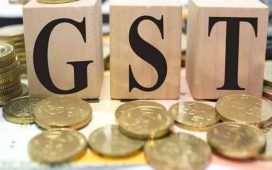
The share of physical savings has risen to 70%, while financial savings are 30%. This trend was last witnessed during the ‘taper tantrum’ period when macro stability issues came to the fore. It’s unsurprising that the increase in physical savings has been largely driven by households buying homes and gold, which have seen a cumulative 50% increase from FY19 to FY23.
Most of the pickup in households’ physical savings into real estate is due to easy money conditions post-Covid. Borrowing against existing investments in gold assets for additional investments and consumption has also caused household leverage to increase further.
Retail loans for most banks have grown at more than 20% CAGR for the last few years, and the pricing of loans to these two asset classes is attractive from a borrower perspective. The spread of lending rates on these products, compared to bank term deposit rates, is at historic lows today. Easier availability of these loans and heightened competition among banks have resulted in banks converting their silent depositors into adventurous borrowers.
Cross-selling by banks to their depositor base has swung gross customer value (GCV) for a large portion of their customers to be more dependent on their borrowings, currently compared to their deposits, as was in the past. NBFCs joined the party, and their retail loans have grown at a faster pace than banks’. India’s household debt-to-GDP level spiked to near-record levels of almost 40% of GDP as of 2023.Meanwhile, gross financial savings have stayed unchanged at 11-12% of GDP in recent years (except during Covid when it spiked to 15.4%). Within financial savings, there has been a switch away from deposits (FY23 deposits share 37% of financial savings vs 57% a decade ago in FY13) into riskier capital market products, thanks to above-normal returns in recent years. The shift in household savings-investment behaviour has been driven by a hunt for yield due to availability of cheap liquidity and above-average returns across asset classes like equities, real estate and gold.How long will such above-normal returns continue? How much leverage can households sustain and service through the cycle if the markets underperform in the coming years? Does this hunt for yield stoked by leverage post any financial stability risk?
Historical market experience shows that whenever asset classes outperform over a certain time, a period of underperformance follows. When markets correct, household finances are more fragile than in the past, with assets increasingly skewed towards volatile market-linked products and higher leverage on the liability side. Correspondingly, the wealth effect will likely be more pronounced, and their behaviour in such conditions will have larger implications for the economy.
No one can predict how long this dream run can continue. The market is slowly digesting RBI’s higher-for-longer guidance regarding interest rates. With deposits growth stalling and low- cost Casa (current account/savings account) deposits hard to come by, banks would have to moderate credit growth to maintain healthy balance sheets.
Bank results for Q1 FY25 are sending strong signals that FY24 was the trough in terms of slippages, and slippages in the current year will tick up from those levels. Bank stock price movements reflect such concerns.
The stress test for households seems to be around the corner. It’s time they focus on conserving capital rather than believing in the hunt for yield. Hopefully, the silent depositor will get her due and move back to allocating more to fixed-income products, irrespective of their tax efficiency. The power of compounding works best if uninterrupted, and households need to rework their savings profile to ensure that it stays that way.
Leverage thrills but kills. Time to stay far away from it.
Varadarajan is chairman, and Pasricha is chief economist, Union Bank of India










